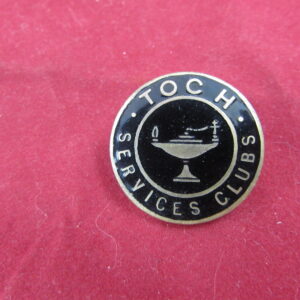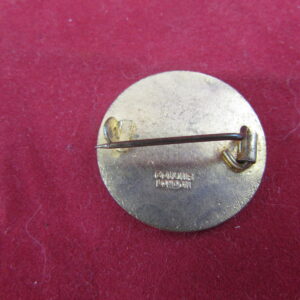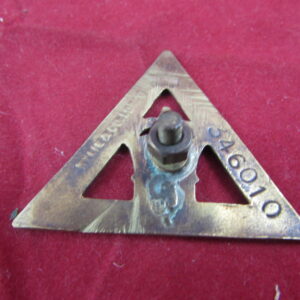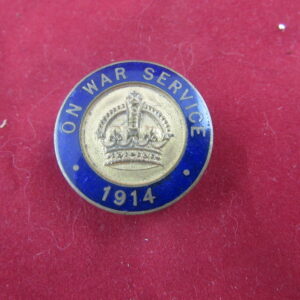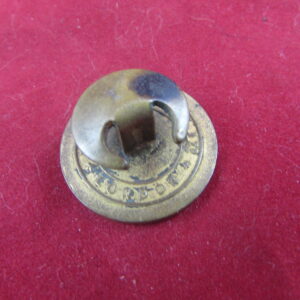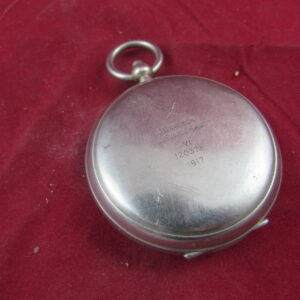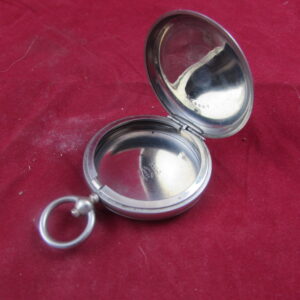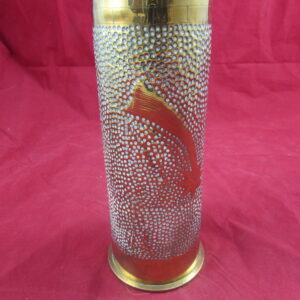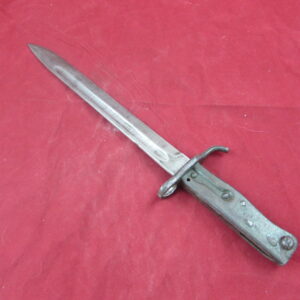WW2 German Working ‘Drill’ Tunic ( Drillichjacke)
Views: 747
£195.00
WW2 German Working ‘Drill’ Tunic ( Drillichjacke)
- Description
- Shipping and Delivery
Description
WW2 German Working ‘Drill’ Tunic ( Drillichjacke)
1935 period German drill uniform jacket in off white linen material.
These were worn by German troops as working dress, and only displayed rank insignia. Much worn by German troops, they were manufactured in olive green from February 1940 onwards due to camouflage considerations. It was this early pattern of tunic that lead to the later introduction of the summer HBT combat tunic from 1942 onwards.
Much seen in wear by troops manning bunker positions these are a classic part of the German soldiers uniform worn also as a winter camouflage garment over the combat jacket in some instances.
All the grey pebbled buttons are present and the hook and eye to the top collar.
2 X outside pockets, one inside, hanger tag to inside to collar.
Obergefreiter insignia to left shoulder.
As you can see from photo’s , some staining and a few wartime repairs.But overall a sound jacket.
34 inch chest.
The following is a general overview of the Heer main uniforms, used by the German army prior to and during World War II.
Terms such as M40 and M43 were never designated by the Wehrmacht, but are names given to the different versions of the Model 1936 field tunic by modern collectors, to discern between variations, as the M36 was steadily simplified and tweaked due to production time problems and combat experience.[citation needed]
Uniforms of the Heer as the ground forces of the Wehrmacht were distinguished from other branches by two devices: the army form of the Wehrmachtsadler or Hoheitszeichen (national emblem) worn above the right breast pocket, and – with certain exceptions – collar tabs bearing a pair of Litzen (Doppellitze “double braid”), a device inherited from the old Prussian Guard which resembled a Roman numeral II on its side. Both eagle and Litzen were machine-embroidered or woven in white or grey (hand-embroidered in silk, silver or aluminium for officers). Rank was worn on shoulder-straps except for junior enlisted (Mannschaften), who wore plain shoulder-straps and their rank insignia, if any, on the left upper sleeve. NCO’s wore a 9mm silver or grey braid around the collar edge.
Shoulder-straps and, in many cases, collar patches were piped or underlaid in Waffenfarbe, a color code which identified the branch of service to which the unit belonged: white for infantry, red for artillery, rose-pink for Panzer troops and so on.
Field and service uniform
Field Tunic (Feldbluse)
Model 1936[edit]
When the Nazis came to power in early 1933 the Reichswehr, the armed forces of the Weimar Republic, were near the end of a two-year project to redesign the Army Feldbluse (field-blouse). Beginning in that year the new tunic was issued to the Reichsheer and then the rapidly growing Wehrmacht Heer, although minor design changes continued to be made until the appearance of the standardized Heeres Dienstanzug Modell 1936. The M36 tunic still retained the traditional Imperial and Reichswehr uniform color of grey-green “field gray” (feldgrau)[a] wool, but incorporated four front patch pockets with scalloped flaps and pleats (on Reichswehr tunics the lower pockets were internal and angled). The front was closed with five buttons rather than the previous eight, and the collar and shoulder straps were of a dark bottle-green instead of the Reichswehr grey.[1] Compared to the Weimar-era uniforms the skirt of the feldbluse was shorter and the tailoring was more form-fitting due to Germany’s adoption of mechanized warfare: soldiers now spent much time in the confined space of a vehicle and a shorter jacket was less likely to pick up dirt from the seats.[2] It also included an internal suspension system, whereby a soldier could hang an equipment belt on a series of hooks outside of the tunic. These hooks were connected to two straps inside the lining, which spread the weight of equipment without having to use external equipment suspenders. The M36 was produced and issued until the very end of the war, though successive patterns became predominant.
SS field uniforms were of similar appearance externally but to fit their larger patches had a wider, feldgrau collar, and the lower pockets were of an angled slash type similar to the black or grey SS service-dress. The second button of an SS Feldbluse was positioned somewhat lower, so that it could be worn open-collar with a necktie. Due to supply problems the SS were often issued army uniforms.
WW2 German Working ‘Drill’ Tunic ( Drillichjacke)
At this time, Antiqurio ships to locations within the United Kingdom mainland. Items can be shipped worldwide by prior agreement please contact us. The risk of loss and title for all items ordered on this website pass to you when the items is delivered to the shipping carrier. We are unable to calculate shipping automatically for multiple items when shipping internationally please contact us by email if you wish to purchase more than one item and live outside of the UK; we are working to resolve this
International
Customs and import duties may be applied to International orders when the shipment reaches its destination. This is not imposed by Antiqurio and these charges are the responsibility of the recipient of your order and are likely to vary from country to country. Contact your local customs office for details.
Shipping laws are different in each country. It is your responsibility to check with your Customs office to verify whether the country to which you are shipping permits the shipment of your products. Antiqurio is not responsible for any direct, indirect, punitive, or consequential damages that arise from improper international shipping practices.


